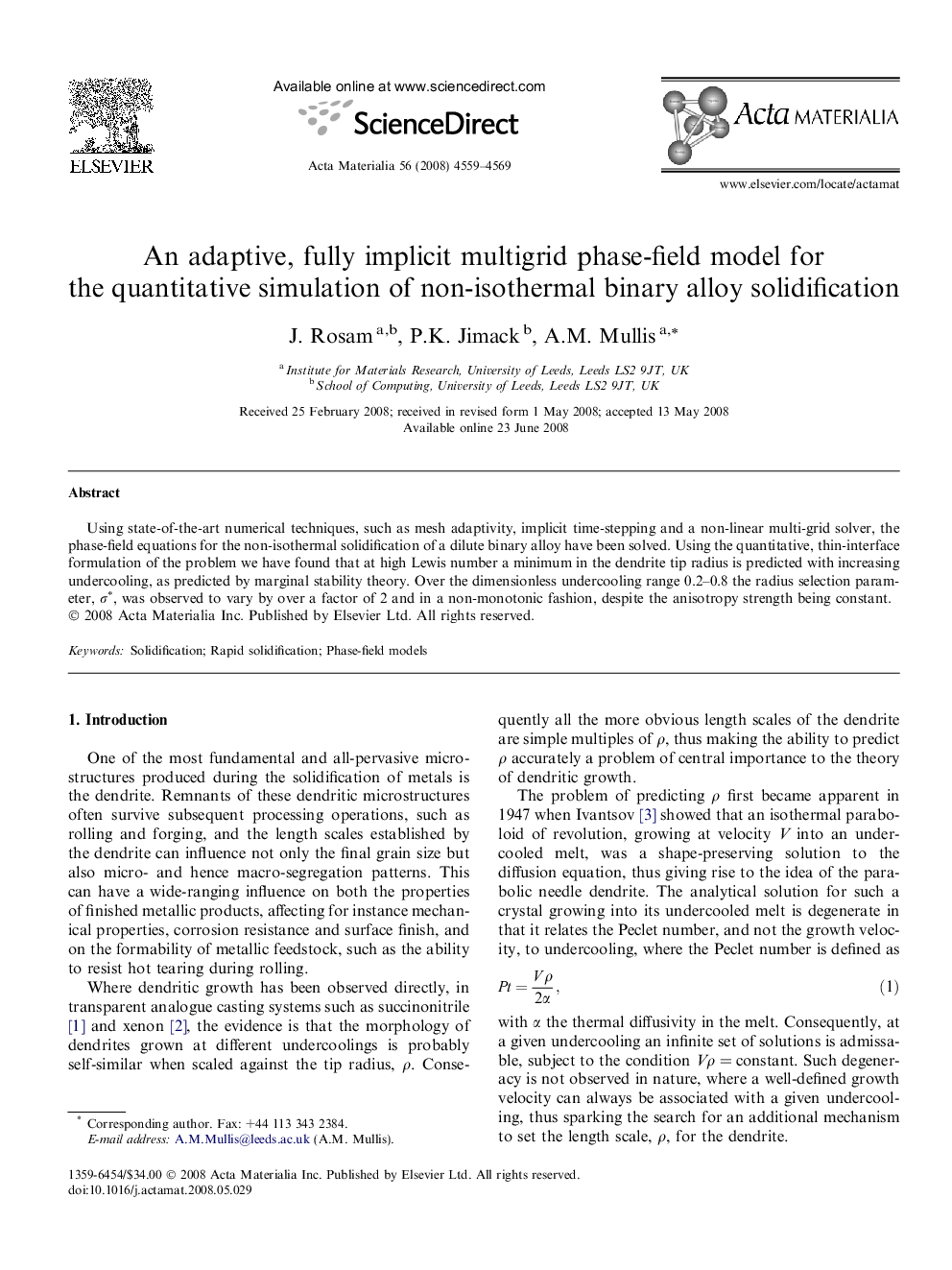| Article ID | Journal | Published Year | Pages | File Type |
|---|---|---|---|---|
| 1450005 | Acta Materialia | 2008 | 11 Pages |
Abstract
Using state-of-the-art numerical techniques, such as mesh adaptivity, implicit time-stepping and a non-linear multi-grid solver, the phase-field equations for the non-isothermal solidification of a dilute binary alloy have been solved. Using the quantitative, thin-interface formulation of the problem we have found that at high Lewis number a minimum in the dendrite tip radius is predicted with increasing undercooling, as predicted by marginal stability theory. Over the dimensionless undercooling range 0.2–0.8 the radius selection parameter, σ∗, was observed to vary by over a factor of 2 and in a non-monotonic fashion, despite the anisotropy strength being constant.
Related Topics
Physical Sciences and Engineering
Materials Science
Ceramics and Composites
Authors
J. Rosam, P.K. Jimack, A.M. Mullis,
